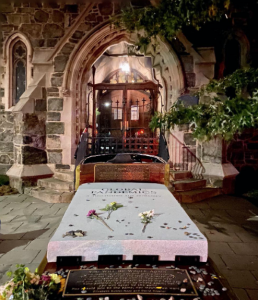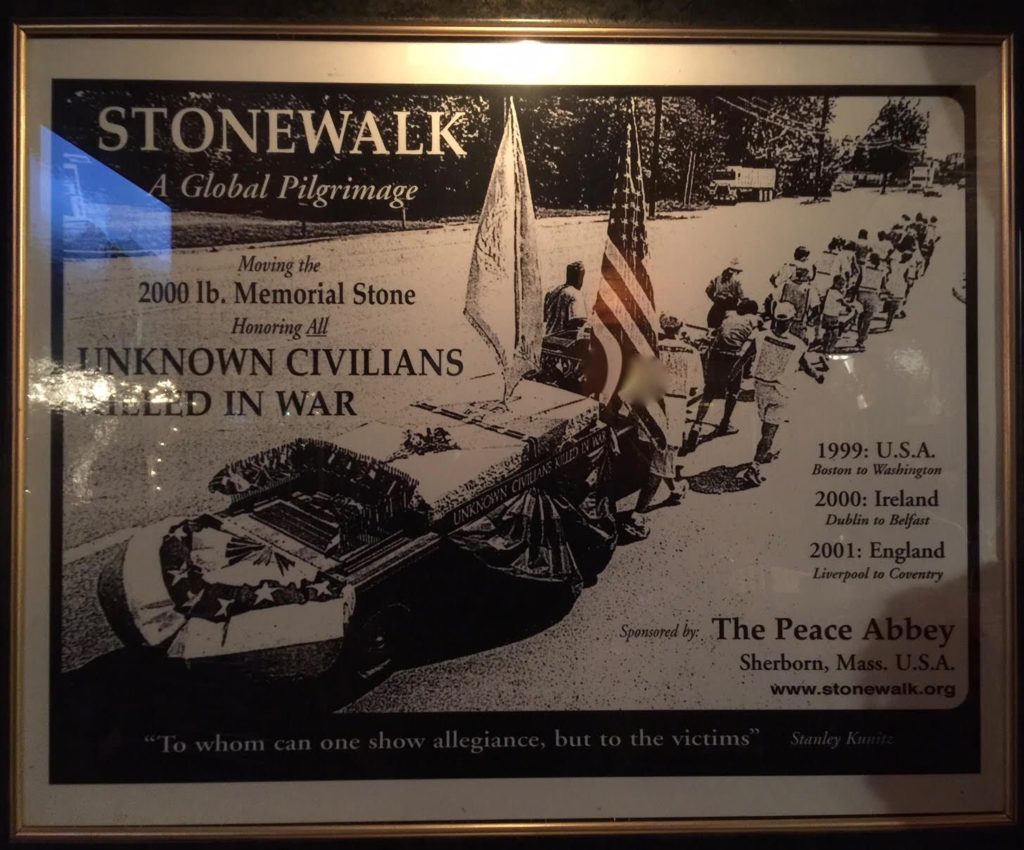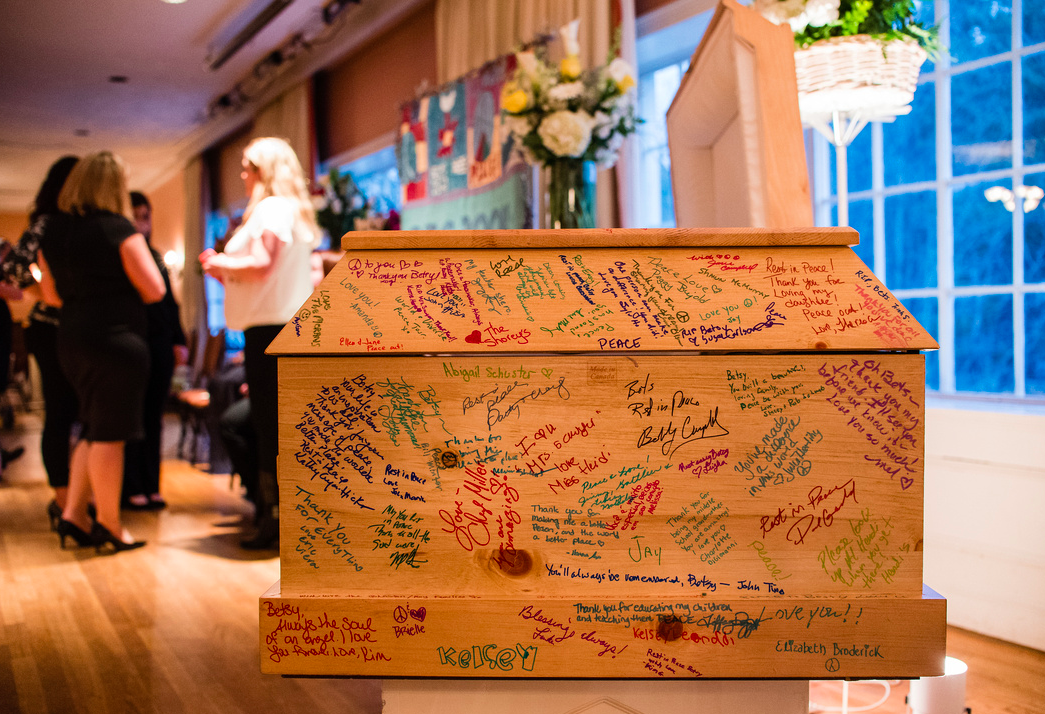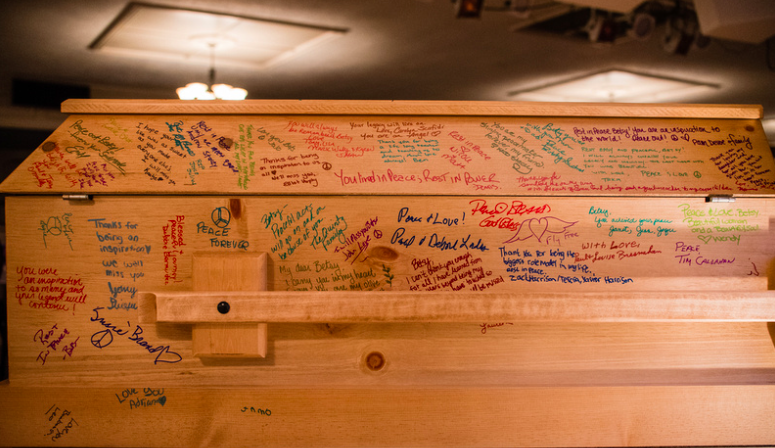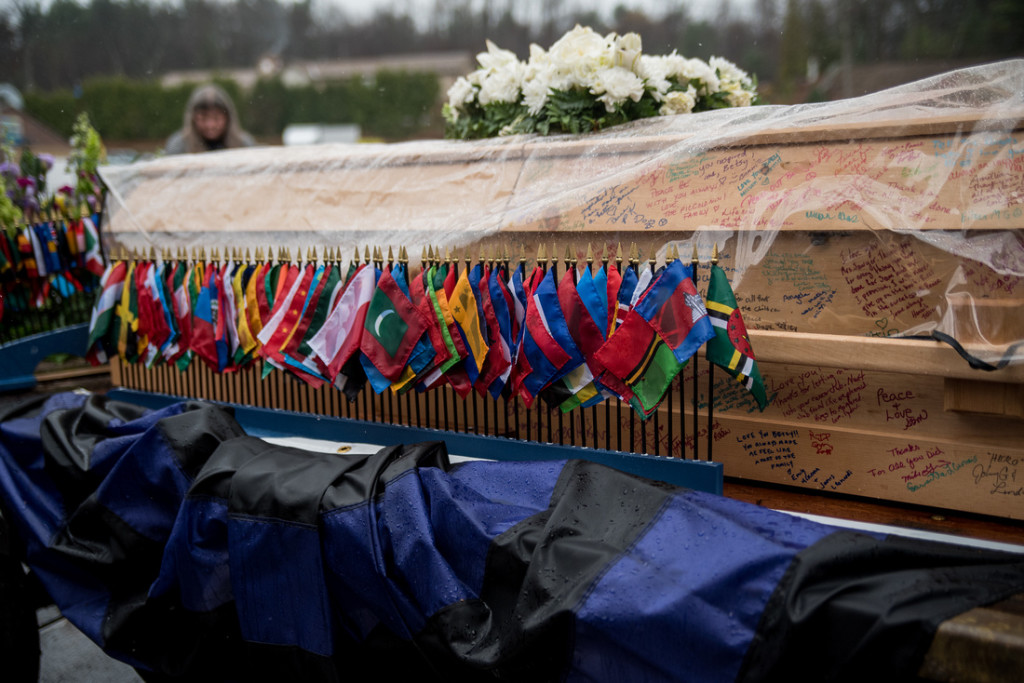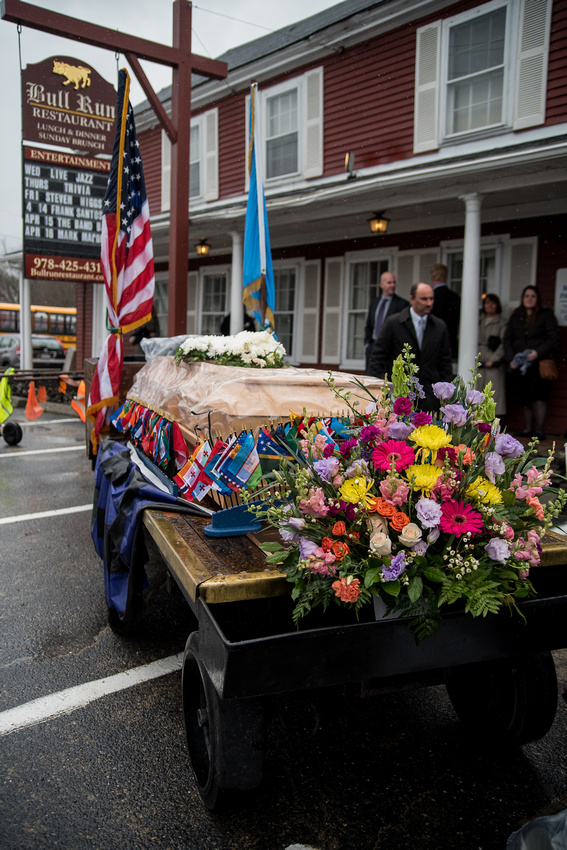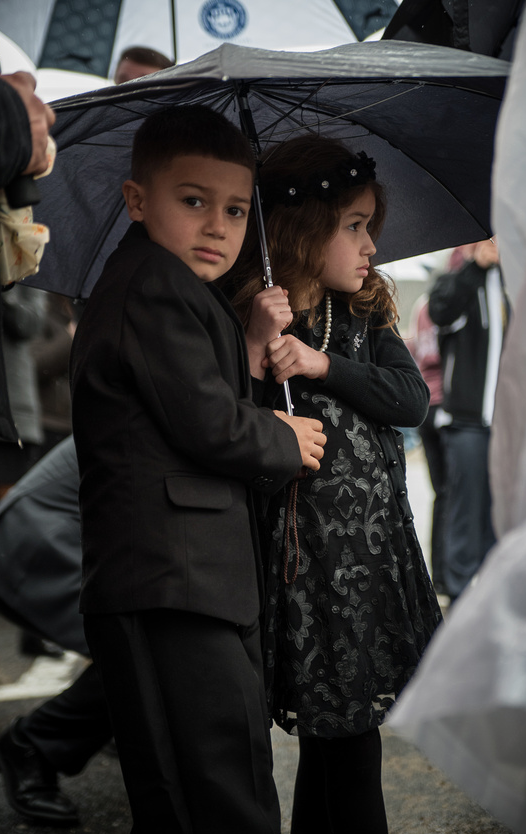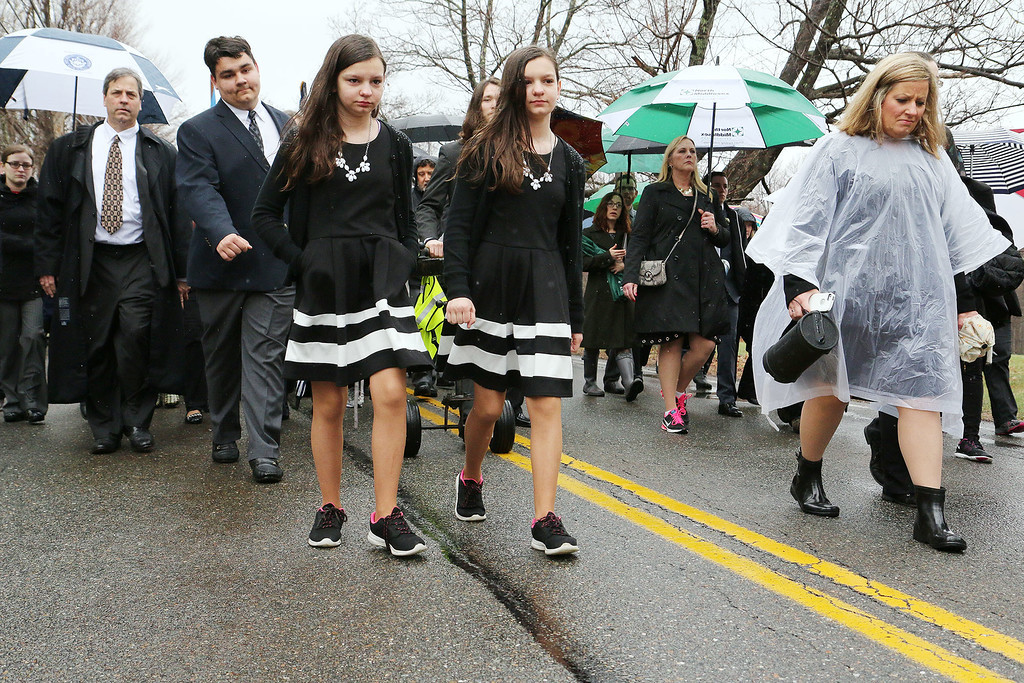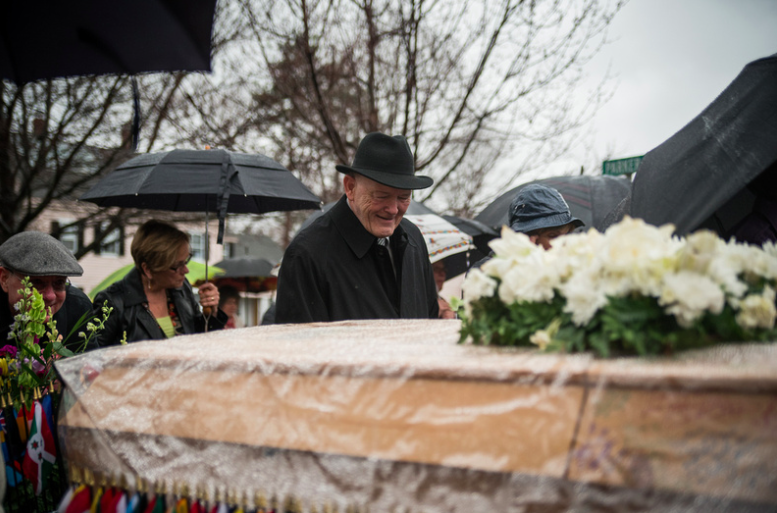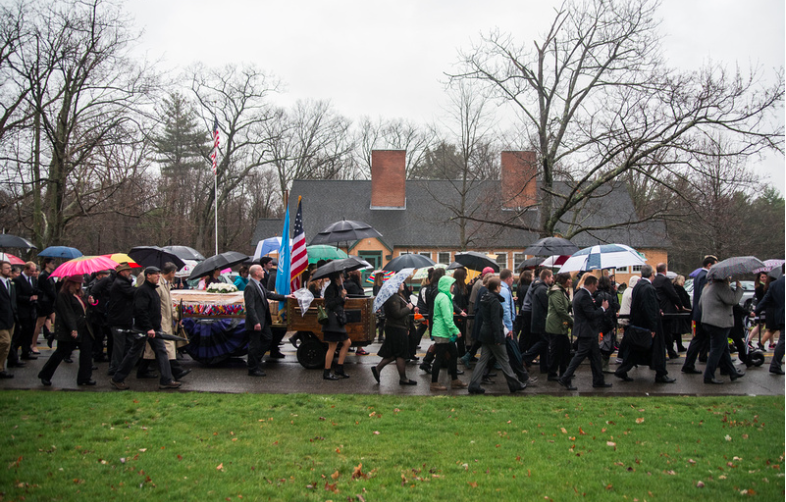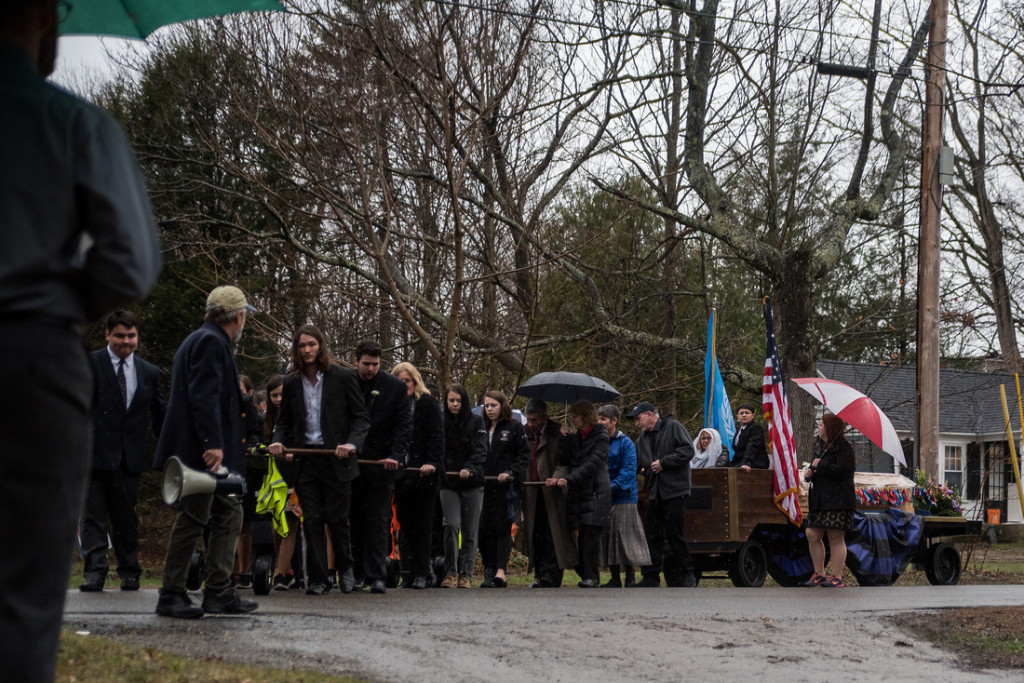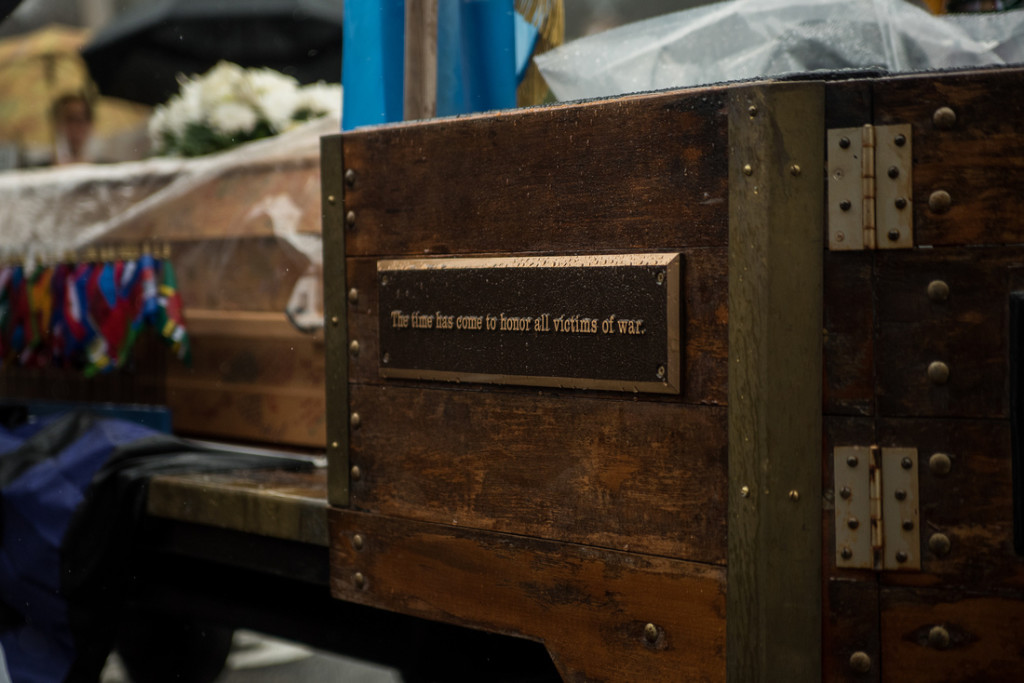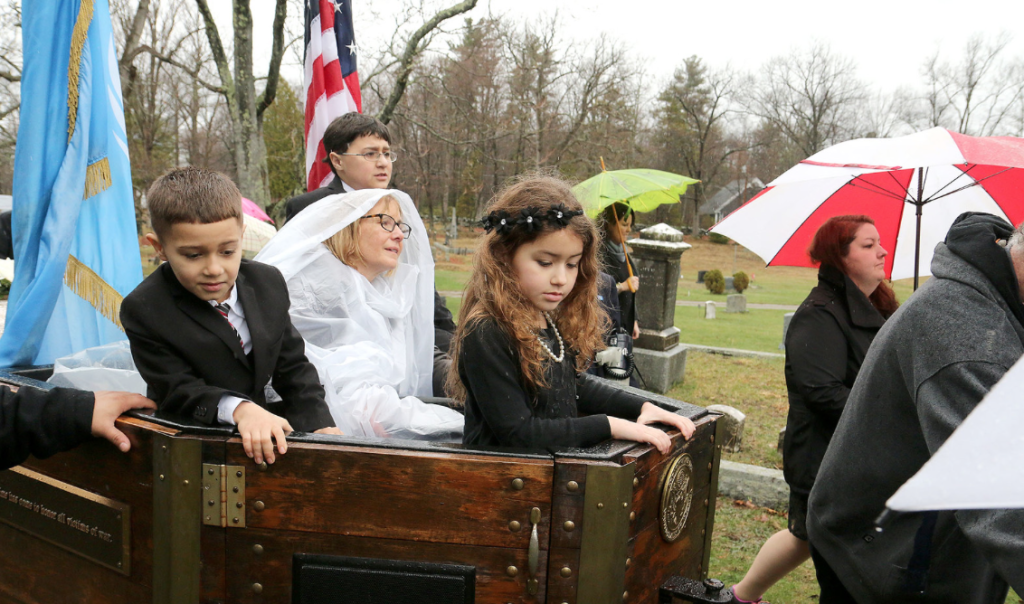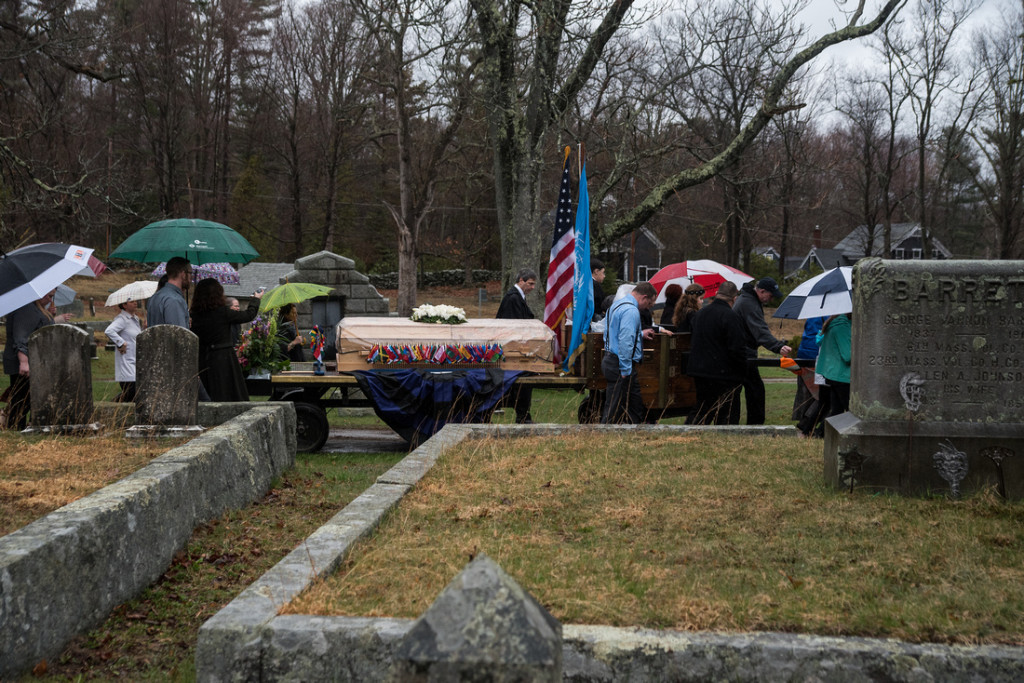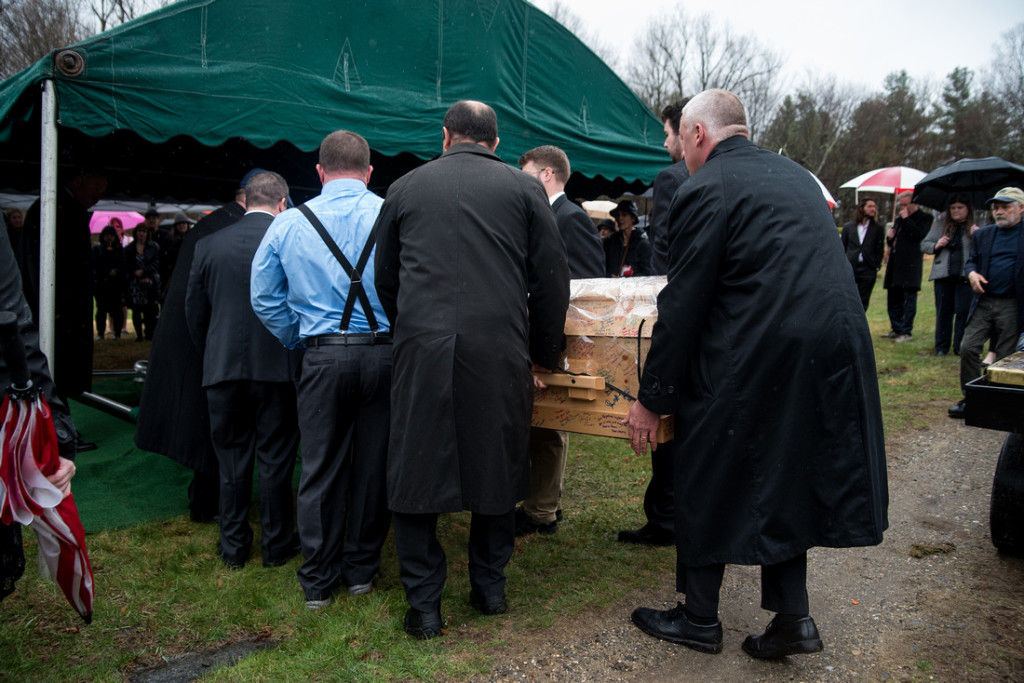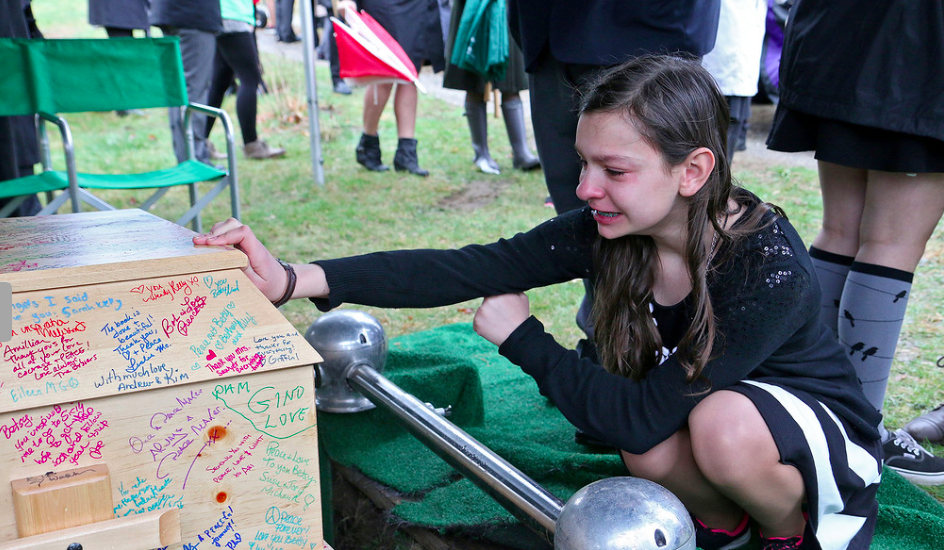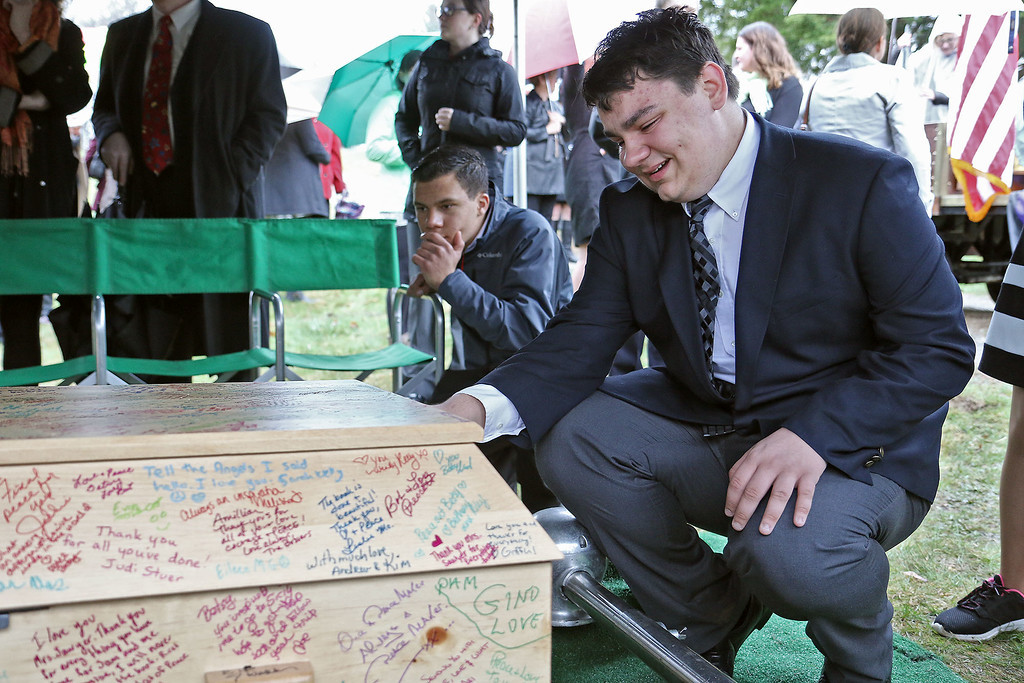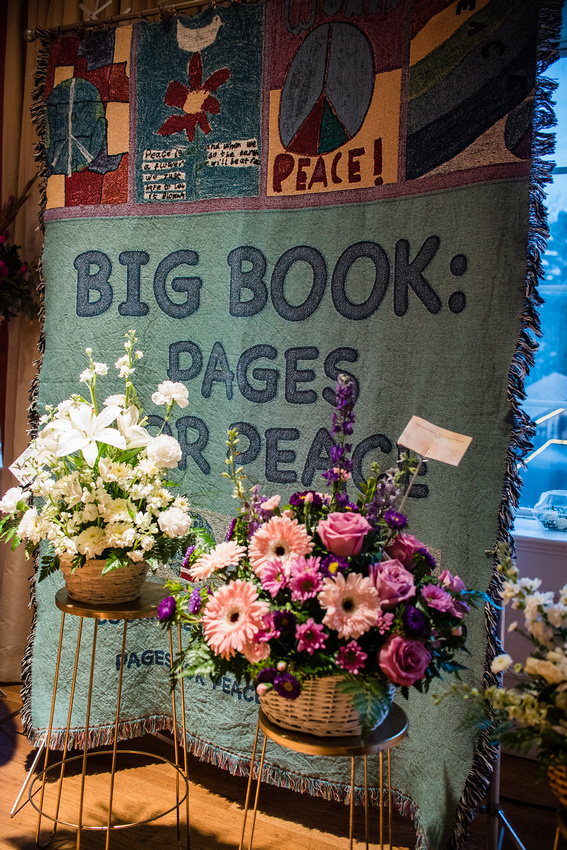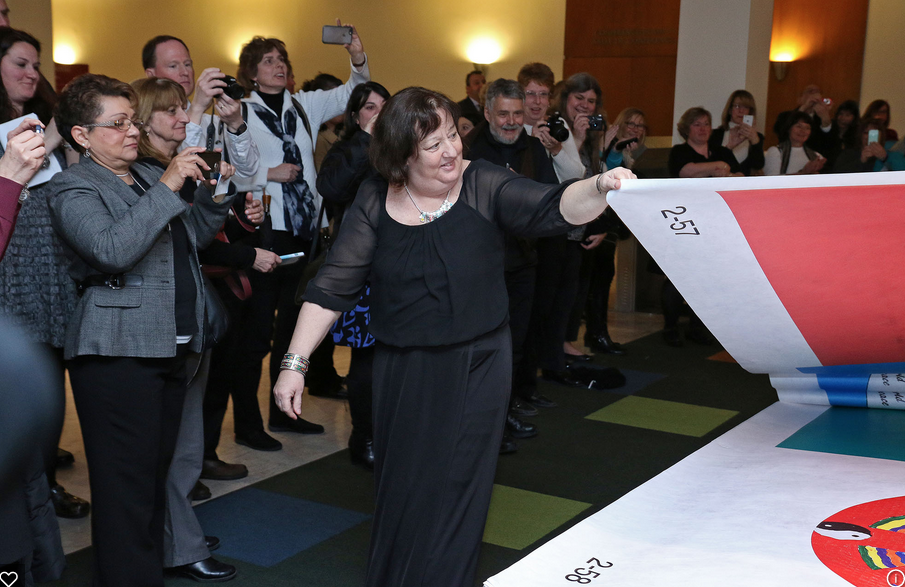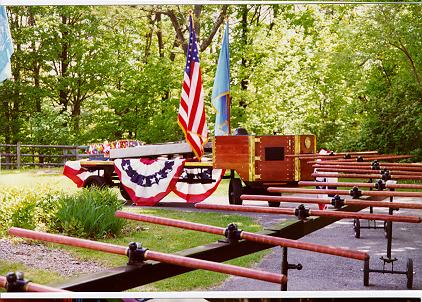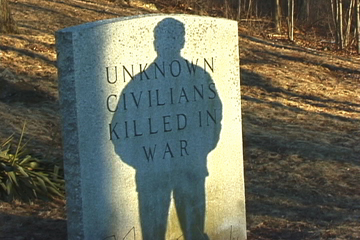PEACE ABBEY CAISSON
The caisson is presently on Hart Island NYC holding the Global Pandemics Touchstone. Once the touchstone is permanently placed at the site where over one million New Yorkers are buried in mass, unmarked graves, it will be dispatched to the Middle East where it will carry a granite stone to be pulled between major locations where armed conflict has wreaked havoc on civilian populations.
The Peace Abbey caisson has been repurposed to carry the casket of recipients of the Courage of Conscience Award or members of the Peace Abbey community to their final resting place. The caisson was first utilized for this requiem purpose on April 12, 2016 for award recipient Betsy Sawyer in Shirley, Massachusetts. For more information regarding the use of the caisson, please contact: Lewis Randa, Abbey Foundation at 508-655-2143 or email lewismranda@gmail.com.
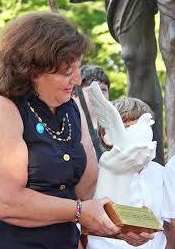 ABBEY CAISSON CARRIES CASKET OF PEACEMAKER
ABBEY CAISSON CARRIES CASKET OF PEACEMAKER
The world lost an amazing peace educator when Betsy Sawyer passed away two weeks after fulfilling her dream of having the Big Book for Peace exhibited at the United Nations Headquarters in NYC. She and her countless students over eleven years at Groton Dunstable Middle School devoted themselves to making this extraordinary book as their gift to the dream of peace. At her funeral service, her students spoke of how her spirit will live on in their lives and how they will continue their efforts to bring the Big Book throughout the world. Betsy Sawyer was a powerful presence for peace, a lover of life and committed comrade on the path of peacemaking. Our hearts are broken that she is no longer with us, but her indomitable spirit lives on in our work and our devotion to one another as we live each day to the fullest.
PHOTOS BY LOWELL SUN, GROTON HEALD, SENTINEL & ENTERPRISE/JOHN LOVE AND ROBIN TURHUNE.
STONEWALK
The Abbey caisson was designed, engineered and constructed in 1998 to carry the two thousand pound granite memorial stone for Unknown Civilians Killed in War from the Peace Abbey grounds in Sherborn, MA to Arlington National Cemetery in 1999. Referred to as Stonewalk, the walk left the Abbey on July 4, 1999 and arrived at the Arlington Memorial Bridge where it was halted midway on the bridge and impounded by Federal Law Enforcement Officers on the anniversary of the bombing of Hiroshima, August 6, 1999. The 33-day journey covered 500 miles and went through seven states and 106 cities and towns. The stone was rejected and impounded by the elected officials in Washington as the government did not want a reminder of the true cost of war in the nation’s most sacred burial grounds.
That stone and the others stones that followed were pulled by thousands of people in America, Ireland, England, and Japan. The dream continues that the day will come when innocent victims of war will be recognized at Arlington National Cemetery.
It’s quite a sight: A dozen people, huffing and puffing like oxen along the roadway in a hand-grip yoke arrangement as they pull a 15-foot-long caisson on rubber tires, its cargo a 2,000-pound granite memorial stone carved with the words, “Unknown civilians killed in war.”
A group of people connected with the Peace Abbey in Sherborn, Mass., came up with the project, known as Stonewalk, to honor these often forgotten casualties of war. Volunteers are walking the stone from Massachusetts to Arlington National Cemetery, where it will be offered as a gift. The group hopes that it can be placed outside the amphitheater near the Tomb of the Unknown Soldier.
As the war in Kosovo made clear, many civilians die in war. While soldiers are lauded with patriotic honors for their suffering, the recognition of civilian casualties too often gets intentionally lost in euphemistic creations like “collateral damage.”
Unless they’re useful as propaganda fodder, no one really wants to think about civilian casualties. They are either a horrible mistake or a moral embarrassment.
In the techno-war atmosphere of Vietnam, civilian bodies were used to improve the numbers. According to J. William Gibson, author of The Perfect War, “War-manager pressures for high body counts led to both systematic falsification of battle reports . . . and systematic slaughter of Vietnamese noncombatants.”
In his memoir Happy Hunting Ground, Martin Russ puts it in more grim terms: “It’s too much to expect an American just out of Hick City High to distinguish between guerrillas and civilians; they all look alike, they all dress alike, they’re all gooks.”
That, sadly, is the nature of war. At the level of the killing, despite all good intentions on the diplomatic level, there are simply no rules. The killing of innocents is a given.
In the Philadelphia area, members of several veterans groups and others are helping to pull the stone. If all goes well, they will be walking through the Downingtown-Coatesville area today and tomorrow.
Public reception has been quite positive. The police chief in Plainfield, N.J., for example, took the entire Stonewalk crew out to dinner.
What exactly will happen when the Stonewalk caisson reaches the gates of Arlington National Cemetery is not clear. It is hoped that the simplicity of the stone and its nonpolitical message will not be seen as a threat to national security or somehow a dishonor to those in uniform who died in our wars.
The Stonewalk project is not pointing a finger – it is simply acknowledging an indisputable fact.
John Grant is president of the Philadelphia Chapter of Veterans For Peace.
STONEWALK: International Peace Walk for Unknown Civilians Killed in War.
Stonewalk Introduction Pre-walk video to news stations to Arlington National Cemetery
Stonewalk Film website by Progressive Picture.
Stonewalk Trailer for Documentary WGBH Memorial Day Program.
Stonewalk News coverage of beginning of Stonewalk at UMASS Boston.
Stonewalk: 2004, 911 Families for Peaceful Tomorrows Documentary: Boston to New York City.
Stonewalk New York City Footage, 2004.
Stonewalk Japan: 2005, 60th anniversary of the bombing of Nagasaki to Hiroshima.
Stonewalk Korea: 2007 Seoul, South Korea to the DMZ.
THE PEACE ABBEY FOUNDATION | 16 Lavender Street, Millis, MA 02054 | 508.655.2143 | admin@peaceabbey.org.
